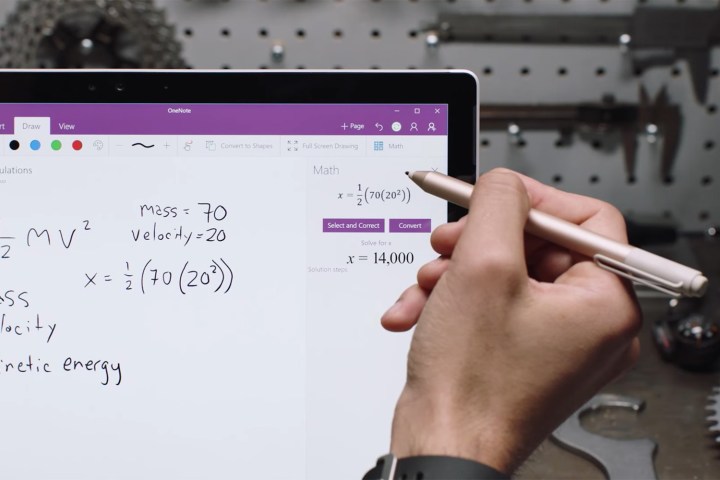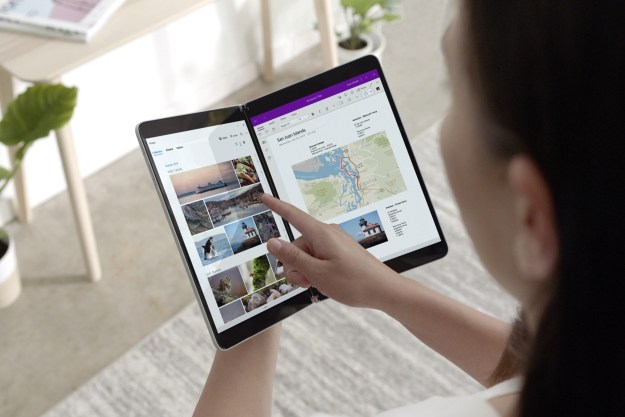
Build 2017 is happening on May 10-12, 2017 in Seattle, and Microsoft has made no secret of what it’s planning to cover in general. At its root, Build is organized for the company’s developer community and it’s all about giving them the tools they need to build solutions around Microsoft products and services. Therefore, much of Build’s content is advertised in advance, which allows the event’s primary constituencies to plan where to invest their time and attention.
Microsoft will likely highlight the next major Windows 10 update, Redstone 3, at this year’s event.
At the same time, Microsoft often introduces new products and services at Build that take advantage of the media coverage that surrounds events like this. Therefore, the company is likely to sprinkle in a few surprises.
Build 2016 covered many topics, including the introduction of Windows 10 Anniversary Edition, HoloLens, new developer tools, and more. Another dominant theme involved artificial intelligence, bots, and machine learning, which is no surprise given the rise of those same technologies industry-wide.
Build 2017 looks to continue many of the same themes, and Microsoft will likely weave a narrative around its developer tools and its overarching “mobile-first, cloud-first” productivity solutions strategy. With that said, here are the areas where we expect Microsoft to focus, and where any surprises in terms of products or services will probably arrive.
Visual Studio 2017
There’s a tendency to focus on the unexpected things that a company might introduce at an event like Microsoft Build. Those are the things that make for exciting news, after all, not the boring sessions covering important but well-known topics that make up the bulk an event’s time.
However, Build is first and foremost where developers learn about Microsoft’s newest tools and technologies. Given that Visual Studio 2017 was just released in March 2017, we expect Microsoft to spend considerable time going over the intricacies of its newest development environment.

If you check out Microsoft’s Build 2017 developers page, you’ll note the company lists the following as the conference’s key points:
- Improvements that help you immediately engage your users with beautiful UI and natural inputs
- Team collaboration and connectedness to streamline and improve your development experience
- Services that make it easier to reach customers and learn what they want from your software
- Connected screens and experiences that make your end-to-end experience stickier and more engaging
- Mixed reality and creating deeply immersive experiences
Those five areas touch on a host of different technologies, but Visual Studio 2017 is the core set of tools that developers will use to leverage everything that Microsoft offers in building solutions. They also hint at other areas of focus, such as Windows Mixed Reality and Cortana-powered connected devices.
Windows 10
Windows 10 will be a central topic at Build 2017. Much of Microsoft’s larger strategy involves Windows 10 in one way or another, and so we can expect every aspect of the operating system to be covered heavily both in dedicated sessions and during the various keynotes. The following are some of the Windows 10-specific topics we’re likely to learn more about.
Redstone 3

Microsoft announced Windows 10 Anniversary Edition at Build 2016, and we’ll likely learn more about the next major update, currently codenamed Redstone 3, at this year’s event. Redstone 3 appears to be focused on putting some spit and polish on Windows 10, and so we’ll likely get some new information on “Project NEON,” the new user interface aesthetic that is starting to show up for various apps in Windows Insider builds.
Windows 10 S

Microsoft just announced its “streamlined” Windows 10 S version at its education-specific event last week. We can expect Microsoft to spend some time digging into the details, from both user experience and developer perspectives.
Universal Windows Platform (UWP)

Windows 10 S, which limits users to installing apps from the Windows Store only, depends heavily on more and better UWP apps. So far, developers have been slow to jump on the UWP bandwagon, and that needs to change if Microsoft wants Windows 10 S to compete against iOS, Android, and Google’s Chromebook platform.
Project Centennial

By most accounts, there are more than 16 million Windows desktop apps, otherwise known as Win32 apps, representing an ecosystem that dwarfs Apple’s App Store and Google’s Play Store. Microsoft has Desktop Bridge technology, known as Project Centennial, that it introduced at Build 2015 and that helps developers package their Win32 apps to be able to make them available through the Windows Store.
With the advent of Windows 10 S and the possibility that Microsoft would like to migrate all of Windows 10 to its more locked-down nature, Project Centennial becomes even more important. Microsoft’s own Office productivity suite will soon be available on the Windows Store – we’ll likely hear more about that in a session or two – and the more developers that port classic Windows desktop apps to the Windows Store, the better things will go for Microsoft’s strategy.
Windows Mixed Reality
We already know that Windows Mixed Reality devices from Microsoft’s OEM partners will be making their way to the market in the 2017 holiday season. We’ll likely see some additional details about how the mixed reality (MR) platform is integrated in Windows 10 and how developers can leverage Visual Studio 2017 and other tools to make use of it.
It’s also likely that we’ll see more demonstrations of Windows Mixed Reality hardware and apps.
Cortana Skills Kit
Microsoft’s most important effort in the areas of artificial intelligence, machine learning, and bots is Cortana, the personal digital assistant that powers Windows 10 and that’s available on iOS and Android smartphones. Cortana is also making her way to home assistant devices to compete with Google Home and Amazon Alexa.
The Cortana Skills Kit is the development platform for writing skills that make Cortana smarter, and so it will likely be heavily featured at Build 2017. It’s possible that the first Cortana-powered device, Harman Kardon’s Invoke speaker, will be featured after having its official product page published over the past weekend. We suspect that we’ll learn about other hardware devices as well, and Microsoft’s longer-term Home Hub platform could also be shown off during the conference.
Cloud computing
Microsoft’s cloud solutions, including its Azure cloud computing platform, are among Microsoft’s fastest-growing and most important business segments. Build 2017 will likely focus on how developers can utilize the company’s various cloud-computing products and services in building out their own solution portfolios.
Artificial intelligence
Given how important the topic is to the technology industry in general, there’s little doubt that Build 2017 will devote as many minutes to artificial intelligence, machine learning, and bots. Cortana will be front and center, but other initiatives will likely be introduced and expanded upon throughout the event.
We won’t see new Surface hardware
Build 2017 will weave a narrative around Microsoft’s developer tools and productivity solutions strategy.
We were going to speculate that Microsoft could show off the long-awaited Surface Pro 5 at Build 2017, given the announcement of the new Surface Laptop at the company’s recent education-focused event. However, Microsoft announced yet another event for May, this time on May 23 in Shanghai, and that’s strongly rumored to be a hardware-focused event.
If the company does plan to release something involving the Surface Pro 4, which now apparently could be just a simple refresh of the existing machine, then it will be at that event and not at Build 2017.
Conclusion
If you’re going to attend Build 2017 in person, then there’s enough to keep you more than busy. If you won’t be on site, then you can follow along with the event at Microsoft’s main Build 2017 portal and via Microsoft’s Windows 10, iOS, and Android apps. We’ll be covering the event in its entirety, so be sure check back often to see what Microsoft has in store.
Editors' Recommendations
- Microsoft plans to charge for Windows 10 updates in the future
- Microsoft Build 2022: What to expect for Teams, Edge, and Windows
- Windows 11 is finally taking the Microsoft Store seriously
- Everything Microsoft announced at Build 2021 so far: Windows, Edge, and more
- Microsoft CEO confirms big plans about the future of Windows 10 at Build 2021


